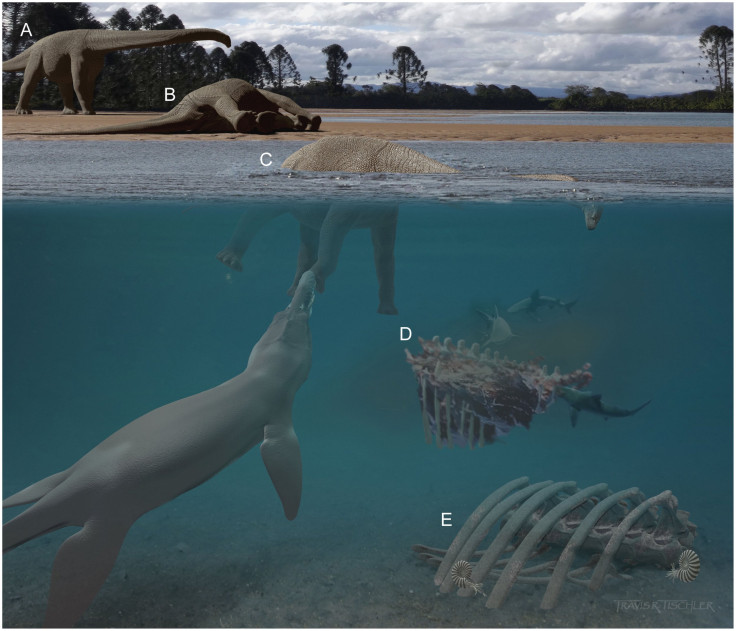The Hidden Bones Of A Historic Fossil Have Been Found

A dinosaur skeleton that was partially dug up before World War II was finally reunited with the rest of its bones — and putting the pieces together could give paleontologists a closer look at how dinosaurs evolved in Australia.
The fossil dates to a little more than 100 million years ago, putting it in what is called the Early Cretaceous period. It was discovered in 1932 in the heart of Queensland and was excavated, with experts at the time digging up backbones from the dino, dubbed Austrosaurus mckillopi. But one modern paleontologist thought there were bones the others had overlooked.
Read: Did the T. rex Have Scales or Feathers?
“When I realized that the backbones at the museum probably formed a section of a dinosaur’s spine, I hypothesized that more of the skeleton was waiting to be found,” paleontologist Stephen Poropat said in a statement from the Swinburne University of Technology.
There was a complication: Scientists searching in the 1970s and 1990s for the place where Austrosaurus mckillopi’s bones were uncovered had failed to find it. But the new team, which included the mayor of the nearby town Richmond, used a helicopter to get a look at the landscape and find the spot.
“From the air we spotted two wooden posts — both of which had toppled over — that had once supported a sign marking the spot,” researcher Tim Holland said in the statement. Mayor John Wharton “then found fossilized portions of bone embedded in rock nearby. We were blown away.”
Austrosaurus mckillopi is one of a group of herbivores called sauropods that are known for having long necks holding up small heads and for long tails that taper toward the end. The long necks served a purpose for them that was similar to the giraffe necks of today: It helped them reach high into the trees to reach foliage to eat.

They were the biggest of all the known dinosaurs, as well as the biggest known land animal ever.
Sauropods started appearing early on in the Jurassic period — which ran from about 200 million to 145 million years ago — and survived into the subsequent Cretaceous, which ended about 66 million years ago, when a mass extinction event wiped out the dinosaurs.
This particular dinosaur specimen was the first Cretaceous-era sauropod found in Australia as well as the first Cretaceous dinosaur found anywhere in Queensland, according to the paleontologists’ study in the journal Palaeontology. But it was only fragments of a whole skeleton. The additional vertebrae and six rib bones the team found will give scientists more information about both this one species of dinosaur and about the evolution of sauropods in Australia, based on both the exterior of the bones and the interior, which were analyzed with the help of CT scans. Most of the sauropods found in the excavation area, like Diamantinasaurus and Savannasaurus, are from 5 million or 10 million years after this dinosaur lived, so it could be a close relative or an ancestor.
Read: A Real Jurassic Park Is Not Going to Happen, Sorry
“The most exciting realization was that portions of the ribs were embedded in the rock surrounding the left side of the backbones,” Poropat said. “The carcass of Austrosaurus came to rest on its left side, and it was not shifted much after it died, allowing the bones to stay close to a life position.”
And it’s possible that closer looks at other rocks of similar ages in this large region, known as the Eromanga Basin, might turn up other fossil specimens.
“Who knows what else might be waiting to be found?” Holland said. “A lucky discovery by a grazier, fossil hunter or tourist out there might be a game-changer.”
A person might even stumble upon more bones from this particular dinosaur.
“The immediate site is now considered to be exhausted of fossilized skeletal material, with the type of Austrosaurus having been augmented as much as possible,” the study says. “However, it is not infeasible that additional portions of the carcass might eventually be found further distant from the already excavated area.”
© Copyright IBTimes 2025. All rights reserved.




















